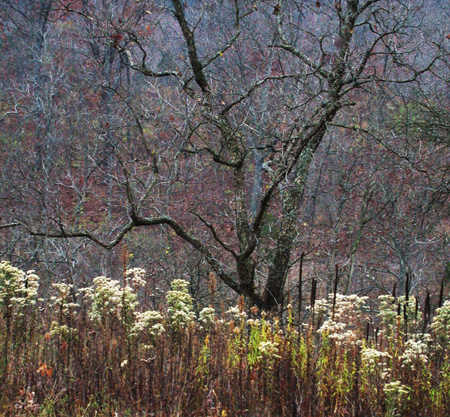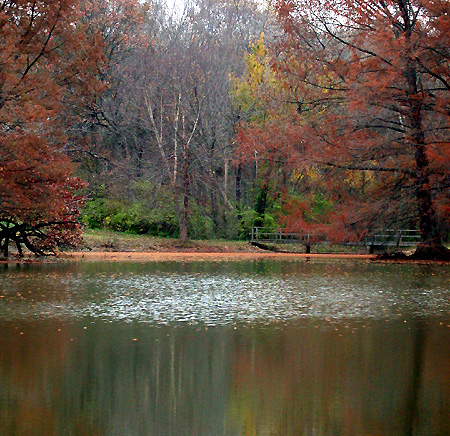Recovered from the Wayback Machine.
David Weinberger responded to my discussion yesterday about semantic web compared to Semantic Web:
So, if the semantic web means only that we’re learning to understand ourselves better on the Internet, or even that we often adopt similar terms and rhetoric, then, yes, the Web is constantly semantically webbing itself. And if the semantic web means that we are formally knitting together, in an ad hoc way, the various standards we’re adopting, then, yes, the web is semantically webbing itself.
But, I don’t think this is what most people mean by the Semantic Web. I think they have two other implications in mind.
The Semantic Web that David writes about is the one that begins with the vision outlined in the now famous Tim Berners-Lee article whereby in the future, the Web will speak to our machines, and the machines to the Web, and we will be tenderly enfolded into a world where intelligent bots will find solutions to our day to day problems at the flick of the button.
According to those who design it, for this utopian Semantic Web to come about David writes, two things must happen: the web forms one single information space that bridges the stubborn individuality of culture and language; and standards must not only continue to propagate across this space, when they combine the synergy results in something new, and utterly different. Marvels of automation… as he refers to it.
But, David continues, as did Clay before him, we can’t form a complete information space, nor will our standards ever combine because history and experience has shown us that none of this will scale; or if it does, it will only be at the expense of the richness of the human experience.
So if the Semantic Web cannot be realized, will we then have to settle for my semantic web, with its simple increments of functionality based on a growing use of standards? Well, yes and no.
Yes, in that my view of the semantic web is one that has already started, and is in use today when I go out to Bloglines and see who has done what recently. This semantic web is already here, and can only continue to expand. But no, in that David misreads what I say, and focuses on the standards, when I was focusing on the rewards.
Years ago when computers dominated entire rooms we knew that someday we would be able to communicate with a computer as if it were another person. We would be able to express emotion and innuendo alike and it would not only understand, it could reciprocate in kind. Of course, as we matured and our computers became more sophisticated, and as we explored the capability of the human visual system or the complexity of human linguistics, we began to realize that our hopes for a true artificial intelligence will never come about. It’s not because of our limitations in technology that this dream won’t be realized – it’s because of we began to realize that the richness of the human experience did not arise from our strengths, but from our failures.
We humans have an amazing ability to adapt to new situations, to accept new learning, and to grow to meet new situations. But this adaptability comes with a price: our memories are chaotic storehouses based on faulty chemical reactions easily influenced by external factors such as drugs, or emotions. I can tell you about a day sitting in my second grade classroom near the window, and I know it was Spring because the window was open and I could hear a mower running outside and smell the newly cut grass – but I can’t tell you what we were discussing, or even what I learned that day. The memories are there, or we hope after youthful experimentation that the memories are there, but we can’t pull them up because if we are marvels of adaptation, and creativity, we are the pits when it comes to efficient memory retrieval.
Later today I will visit several conservations areas in parts of the state where I’ve not been before to take photos of birds, and I will be able to walk down strange paths and adapt to the changing nature of the path because I can sense the change through my eyes – but if I walked at night, without a flashlight, I would be helpless because I am dependent on my eyesight and can’t see in the dark.
Over time, as we experimented with artificial intelligence, most computer scientists began to realize that what we didn’t need from computers is human intelligence and capability – after all it’s easy enough to create humans, one just has to have sex – but computers that partner with us, each providing what the other can’t. We need computers that store bits of information we can retrieve easily because we can’t depend on our own frail memory. Computers that can travel paths on distant planets, and adjust to the changing environment, true; but ones that won’t be looking up and marveling at the strange new world around it; becoming reminded of a song heard once years ago and then suddenly bursting forth into that song because they cannot help but sing it.
The Internet and the Web were both originally designed to facilitate sharing of information from many different machines at once. At least, when we look at the topology of the Net that’s what we see – machine connecting to line to router to router to line to machine in a vast interwoven threaded void of wire and plastic and chips. But the Internet and the Web did not come about because we needed computers to talk to each other; it came about because we humans wanted to talk to each other. To share our data, and our services, and our lives.
I am limited to a physical existence in one place at a time, which at this moment is St. Louis on a Tuesday morning in November. However, thanks to the Internet I am also in Boston, and Georgia, and South Africa, and the UK. If you read this in a month’s time, I have even transcended time. The laws of physics may limit my physical self, but they can’t limit my experiences because we have partnered with computers and technology to thread the gap between the real and the virtual.
I am a simple woman with simple wants. I read Tim B-Ls vision of a Semantic Web, with its Web talking to my machines, and its machines talking to the Web and intelligent bots being able to work through issues of time, location, and trust and arrange Mother’s treatments with a minimum of fuss and effort on Lucy and Pete’s part, and I will admit there is something about this story that leaves me cold. Not the sharing of calendar information over the Net – we have that now. Not the accessing of relevant information about various hospitals and plans in the surrounding community, because we have that now, too. It was the fact that in this vision, the global “I”, that semiotic “I”, is missing.
“Mom needs therapy? Oh no! Well, we’ll work together and make sure she’s taken care of!”
In this picture, I search for available plans in the area and then call the hospitals and I talk to the people to see if I can trust them to take care of mother; neither I nor the sister of I is so busy as to begrudge the time taken. Nor am I so incapable that I can’t click a button on a volume control, or turn a knob, and lower the volume without the stereo being wired to the Web. Or my toaster.
(Perhaps after twenty years in this field I am turning into that Luddite that I (no this is me now, not the semiotic I) accuse others of being because they resist the use of RDF.)
When I talk about my poetry finder, David sees this as nothing more than a simple growing use of standards, and it does seem as if my vision, my semantic web, is nothing much beyond this. There are no vast reaches of interconnected communication between machines, no extraordinary leaps of intuition in the software that runs between them, little to awe inspire one at first glance. Nothing to statistically analyze, no power distributions to chart.
Find me poems where a bird is a metaphor for freedom. It doesn’t sound very sexy, does it?
My semantic web does not seek to enhance the communication between machines – it seeks to enhance the communication between people. My hope is that someday in St. Louis I will be searching for the perfect poem that uses a bird as metaphor and you, the semiotic you, in your home in the UK or South Africa or Georgia, sometime in the past will have put online this poem you wanted to share, which uses a metaphor for bird, and through time and place and differences in culture and gender and language and interests, we will connect.
This blows my mind. This leaves me weak at the knees and brings tears to my eyes because of the absolute beauty and serendipity of the act. But from a technology standpoint, it doesn’t ring anyone’s chimes, does it?
When did we start valuing technology over that which the technology enables?
I was thinking last night as I tentatively went out among the tech weblogs again,
when was the last time that a discussion in a comment thread within these weblogs end with words, and not code?
We talk about how the Internet sees censorship as damage and routes around it. We sometimes forget, though, that it is people who act as routers in this case, not machines.
We attend conferences because we want to experience the discussion in person. or at least, this is what we say, and I remember conferences and sitting in the back so that I could watch people’s reactions to the words, or look into the speaker’s eyes and see their enthusiasm, and let their voice wrap around me with equal parts hope and wisdom. But in this day of ever growing uses of technology, we aim our phones at each other as if they were lances and this a tournament of pictures; we put up our laptop lids to act as shields to work through, and we don’t look at each other in the eye or watch each other’s reactions as we listen to the speaker. No, instead we write down what the speaker is saying and others in the room read this and they, in turn, write down about the marvel of reading what you’re writing, as you’re in the same room, and we say, isn’t this wonderful?
Personally, I find it sad. And lonely.
David, and Clay Shirky and others, write that the Semantic Web can never happen because it can’t scale; it can never hope to encompass the richness of the human experience enough to reach the synergy needed to burst forth in a blaze of automated glory. If we continue in that direction, what will happen is that we’ll have to adapt to meet it rather than it adapt to meet us. I agree with David and Clay.
However, when I see my semantic web, my simple semantic web, viewed as nothing more than an increased use of standards implemented with the most mundane of technologies, with results that aren’t all that interesting, I’m not sure that the Semantic Web, in all its automated glory, won’t happen someday.





